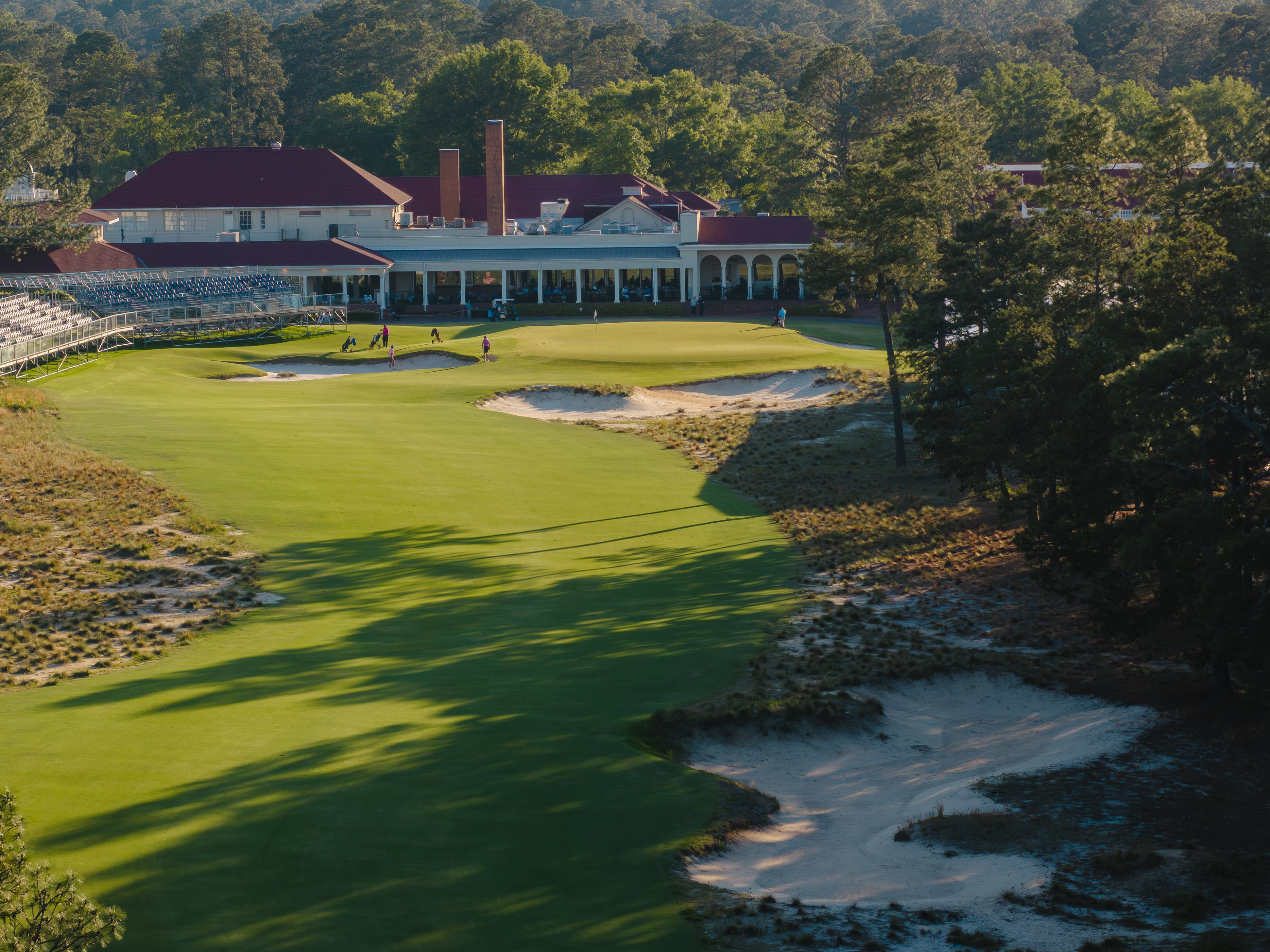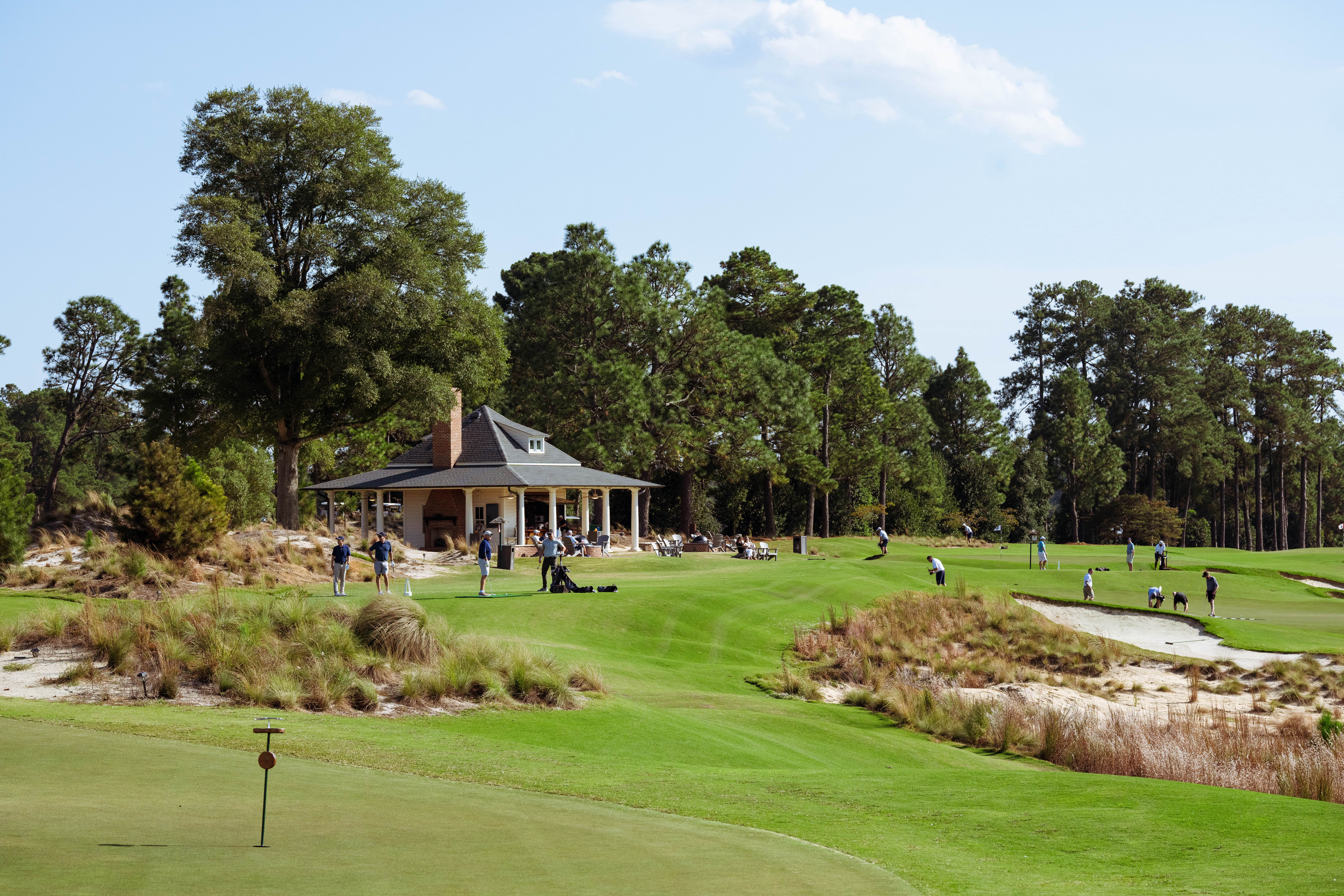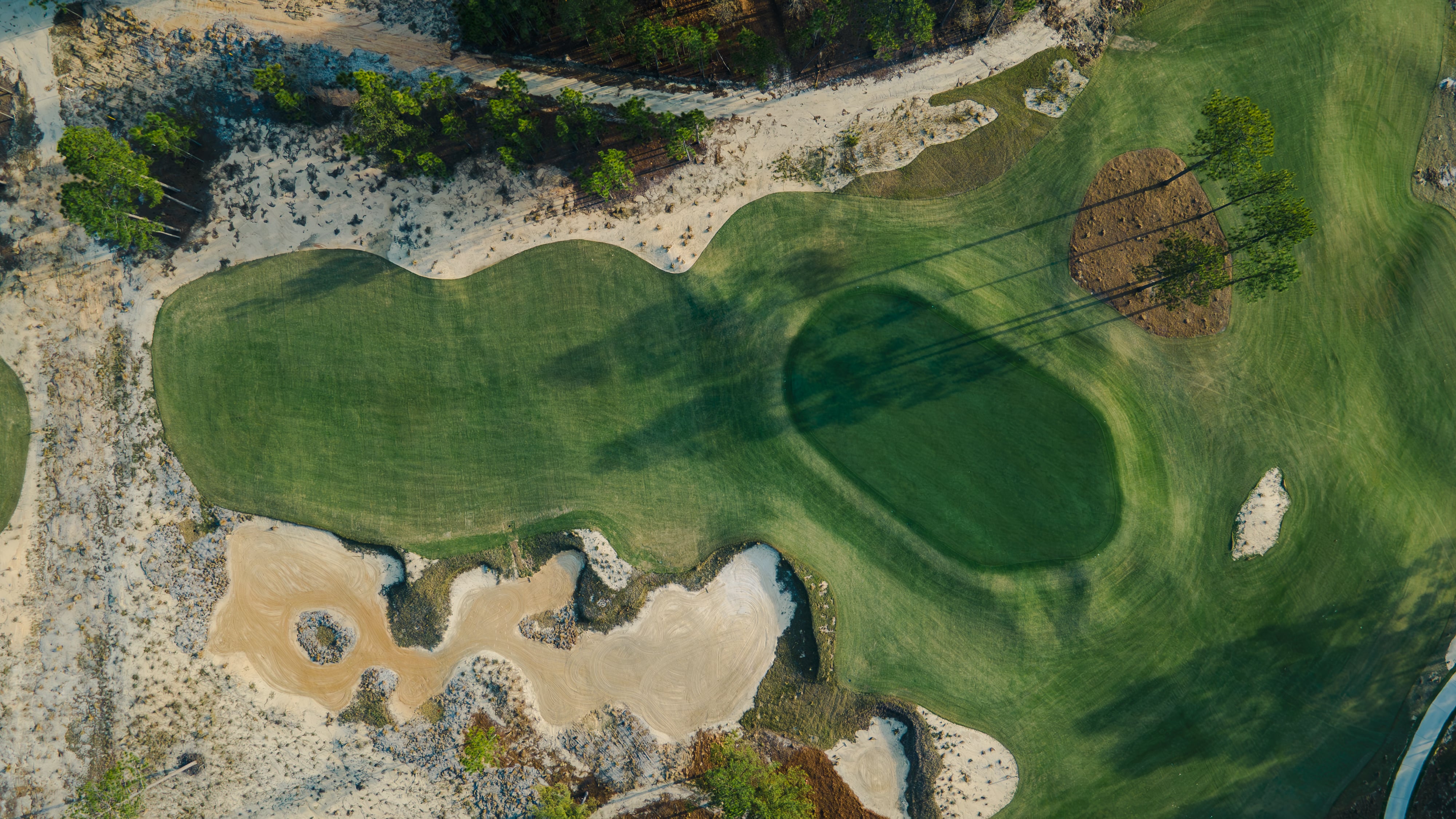By: Alex Podlogar
When Michelle Wie West hoisted the trophy into the glare of the North Carolina sunset following her triumph in the 2014 U.S. Women’s Open, it marked a fortnight of golf that had never been seen. A week before, Wie West was in the gallery on the very same course, joining other LPGA Tour stars following Martin Kaymer as he cruised to his second major championship after winning the U.S. Open. Both majors were played on venerable Pinehurst No. 2 in consecutive weeks, a feat never attempted in major championship golf, and one, though wildly successful, that has not been done since.
And yet, what has followed in Pinehurst Resort and Country Club’s growth and its evolving reputation as the Cradle of American Golf in the 10 years since might be even more impressive – all before the U.S. Open returned for the fourth time in Pinehurst’s history next week.
“There’s a line I like to think about, and that’s ‘Always Pinehurst, always better,’” says Pinehurst Resort CEO Bob Dedman Jr.
It is not a stretch to say that the Dedman family, upon acquiring the Resort out of bank foreclosure in the mid 1980s, saved Pinehurst and set it on a path to restoration and reclamation. Those steps before the turn of the 21st century – marked in lore with Payne Stewart’s unforgettable victory on the 72nd hole of the 1999 U.S. Open – were beyond substantial.
But for a place that has hosted more single golf championships than any site in America, Pinehurst refuses to rest on its historical laurels.
“Pinehurst is not a time capsule,” says Tom Pashley, Pinehurst Resort’s President. “This is not a place where you come and just look at how things used to be and celebrate the past. You can do that here, but you’re also celebrating the present, and looking forward to the future.”

It began, actually, a few years before Kaymer’s and Wie West’s triumphs. In 2010, Pinehurst’s leadership hired the golf architecture firm of Bill Coore and Ben Crenshaw to restore famed No. 2, stripping out 50X acres of manicured rough and replacing it with natural sandscape, native wiregrass, pinestraw and other elements common to the North Carolina Sandhills. It proved an aesthetic, environmental, authentic – and competitive – hit.
“All the changes and evolutions and innovations that happened here in the last 10 years were really sparked when the Dedman family made that decision to restore Pinehurst No. 2,” Pashley says.
The next five years cemented the continuation of a new golden age at Pinehurst.
The Deuce, later named by one publication as the best new restaurant in golf, opened in 2016 in the main clubhouse, overlooking the 18th green of No. 2. A year later, renowned golf architect Gil Hanse was commissioned to craft The Cradle, Pinehurst’s wildly popular par-3 short course. In 2018, Hanse redesigned Pinehurst No. 4, helping one of Pinehurst’s nine championship courses vault back into numerous Top 100 course rankings. That same year, Pinehurst Brewing Co., a microbrewery and restaurant housed in what were once the crumbling ruins of the steam plant that first powered the Village of Pinehurst in 1895, debuted to great acclaim among guests and locals alike.

“The restoration of No. 2 was really the tip of the iceberg,” Hanse says. “The success of that has led to the creation of the Deuce, the Brewery, the Manor Inn being redone, the purchase of Donald Ross’s house (Dornoch Cottage), the restoration of Course No. 4, the creation of The Cradle. It just goes on and on.”
Pinehurst was only moderately slowed by the pandemic. While the Resort closed for nearly three months in the Spring of 2020, with careful procedures in place, it reopened to enjoy and help further fuel the surge in golf’s popularity among casual players. Dedman continues to invest in Pinehurst’s present and future, embarking on a three-phase process to renovate the guest rooms and lobby of its flagship hotel, The Carolina, which will finish this Spring.
The march goes on. In April, Pinehurst opened its first original golf course in nearly three decades after tabbing one of the era’s greatest architects, Tom Doak, to build Pinehurst No. 10 on a slice of 900 acres the Resort has acquired south of its main clubhouse. The site features dramatic elevation changes, natural sandy areas, three lakes and dramatic remnants of an early 20th century sand mining operation.

“Bob doesn’t just live off the history of the Resort and its past,” says former Resort President Pat Corso. “He also builds upon it.”
It’s a legacy Dedman aspires to continue.
“I’d like to think the golden days of Pinehurst are ahead of us,” Dedman says. “When I think about the future of Pinehurst, thinking about looking back 20 years from now, I hope we’re even closer to achieving our purpose. And that’s where we honor timeless traditions and inspire legendary stories, one smile, one round, one moment at a time.”
If the last decade is any indication, Pinehurst Resort is well on its way to doing just that.

